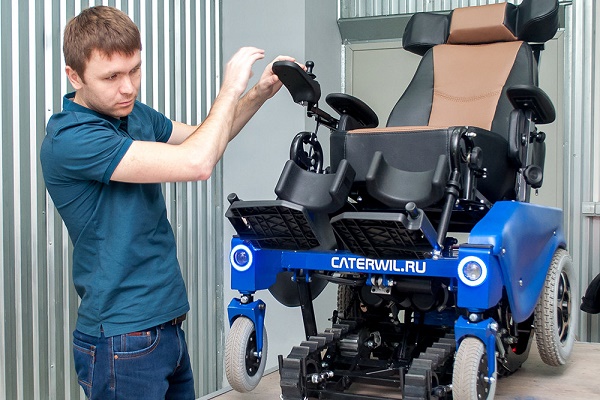There is a wheelchair that can be controlled by the power of thought.
A graduate of the Technological University of Novosibirsk created a system that allows you to control a wheelchair using signals from the brain. An innovative model that has no analogues in the world was tested in April of this year.
Ivan Nevzorov, author of the development, expects that the main consumers of his invention will be people with disabilities, who have a large part of the body paralyzed, but the work of the brain is preserved. Due to the fact that the device is equipped with a track, it can easily overcome obstacles in the form of stair steps, curbs. It is expected that the cost of the stroller when it goes on sale will be about 500 thousand rubles.

The main task that the engineers had to solve was the need to synchronize the work of the wheelchair itself and the caps with the electrodes that were put on the patient’s head.Linking the work of the two main elements helped a computer system that can translate brain signals into a set of specific commands.
At the same time, the task of ensuring security at the given moment is not completely solved. The fact is that a fully paralyzed person is not able to even press the emergency button, which allows the machine to be turned off if its actions are out of control. In addition, the patient himself must be seriously trained so that all the commands of the systems coming from him can be identified accurately and accurately. Full concentration and control over emotions - these are the factors that should be present when working with a novelty.

Specialists from Caretville, working on the project, intend to increase the safety of the machine by adding the functionality to completely disable work in one of the ways available for fully immobilized patients (for example, through blinking), as well as to improve the signaling settings.
In June 2018, the presentation of another new product is expected, which works according to a similar principle - a bed that is also controlled by the power of thought of the patient.

/rating_off.png)








